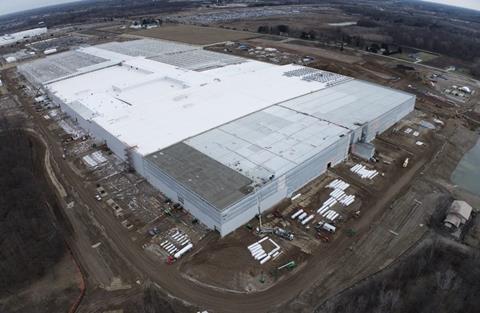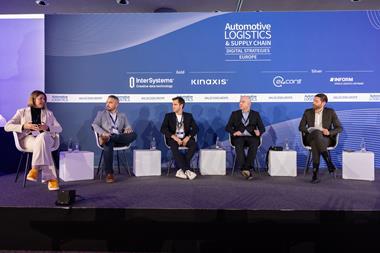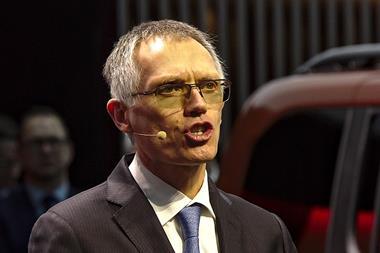GM is selling its stake in one of the three Ultium Cells battery cell plants it set up with LG Energy Solutions
General Motors is selling its stake in the Ultium Cells battery cell plant in Lansing, Michigan to its joint venture partner LG Energy Solution.

GM established the Ultium Cells business with LG Energy Solution in 2020. The partners first announced a $2.6 billion investment to build the battery cell plant in 2022, the third such plant in the US after Spring Hill, Tennessee and Lordstown, Ohio.
The buyout by LG Energy Solution is expected to close in Q1, 2025 and GM expects to recoup its investment in the facility, though it has not disclosed the amount. The carmaker is estimated to have contributed $1 billion to the Lansing project. A spokesperson for GM said the transaction does not change GM’s ownership interest in Ultium Cells and it does not affect joint venture plans at the battery plants in Spring Hill and Lordstown. According to GM, those plants will produce enough batteries for the carmaker’s EV production plans.
“Our EV profitability is rapidly improving thanks in part to our strategic decision to build battery cells in the US with LG Energy Solution. It will be years before some of our competitors approach this level of performance,” said Paul Jacobson, GM executive vice president and CFO. “We believe we have the right cell and manufacturing capabilities in place to grow with the EV market in a capital efficient manner.”
Last month GM announced it is ending its “one size fits all” Ultium Cells programme, which focused on one common module for a purpose-built EV architecture and had plans to build a new battery cell development facility at its Global Tech Center in Warren, Michigan. The carmaker said the Wallace Battery Cell Innovation Center, will significantly expand the company’s battery technology operations and accelerate development and commercialisation of longer range, more affordable EV batteries. Production of the first cells is expected in 2027.
However, GM also said it is extending its battery technology partnership with LG Energy Solution to include prismatic cell development. The carmaker said the prismatic cells are flat and rectangular with a rigid enclosure that allows for space-efficient packaging within battery modules and packs. Using prismatic cells reduce EV weight and cost, while simplifying manufacturing by reducing the number of modules and mechanical components, according to the carmaker.
“We’re focused on optimising our battery technology by developing the right battery chemistries and form factors to improve EV performance, enhance safety, and reduce costs,” said Kurt Kelty, GM’s vice-president of battery cell and pack. “By extending our partnership with LG Energy Solution, we’re taking an important step toward these goals.”

In 2021 GM announced a target 1m EV sales by 2025 in North America and China, its two largest markets, and also projected that 50% of its factories in the two regions would be capable of EV production. As far as the US was concerned that commitment was backed up by an executive order signed by Joe Biden’s administration designed to fortify US supply chains, including those supporting the production of EVs. Biden’s administration had its own stated goals of making 50% of overall vehicle sales in the country electric by 2030. As part of the Inflation Reduction Act (IRA) car buyers are able to draw on tax credits of up to $7,500 which significantly reduce the ticket price of EVs. However, the incoming Trump administration is planning to end the EV tax credits.
EV sales in the US actually grew by 11% year over year in the third quarter of 2024 and reached record highs for both volume and market share, according to estimates by automotive research firm Kelley Blue Book. An estimated 346,309 EVs were sold in Q3 2024, a 5% increase from Q2. The EV share of sales in Q3 hit 8.9%, the highest level recorded and an increase from 7.8% in Q3 2023. While there are wide reports of a slowdown in EV uptake, which could slow further in the US under Trump administration policy, global EV sales for 2024 are still on an upward trajectory, and are expected to continue to grow, albeit at a slightly slower pace than previously expected.
Growth is slower than expected in the US and earlier this year GM scaled back its goals of making 300,000 EVs in 2024 by 50,000 units. A number of other carmakers have also scaled back their EV production targets and Toyota said it was delaying its EV manufacturing in the US until 2026.
GM’s current EV line up
Chevrolet Silverado, GMC Sierra, Cadillac Lyriq, Chevrolet Blazer and Chevrolet Equinox, GMC Hummer pickup and SUV



























No comments yet